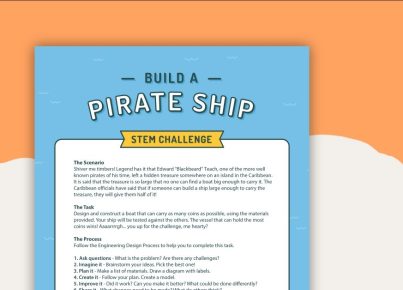Introduction:
STEM, an acronym for Science, Technology, Engineering, and Math, represents a multidisciplinary approach to education that fosters critical thinking and problem-solving skills. Introducing STEM concepts to early learners lays the foundation for future success and career opportunities in these fields. In this article, we will explore the importance of STEM education for young children and how parents and educators can support early learners to effectively engage with STEM subjects.
The Importance of Early STEM Education:
Research shows that children under the age of five possess an innate ability to learn by exploring their surroundings. Introducing them to STEM concepts at a young age can enhance their natural curiosity and foster a lifelong interest in scientific discovery. Furthermore, an early start in STEM education can help bridge the gap between underrepresented groups in these fields, ensuring a more diverse and inclusive future workforce.
How to Incorporate STEM Into Early Learning:
1. Encourage Curiosity: Inspiring curiosity in young children is crucial when introducing them to STEM disciplines. Encourage them to ask questions, make observations, and experiment as they explore their environment.
2. Hands-On Activities: Engage early learners in hands-on activities that promote problem-solving and critical thinking skills. These activities should be age-appropriate and aligned with their interests.
3. Use Everyday Materials: You don’t need expensive equipment or specialized materials to teach STEM concepts effectively. Utilize everyday items such as cardboard boxes, paper cups, and even food items as tools for learning.
4. Make it Fun: Ensure that learning experiences are enjoyable by engaging children through play-based activities. Incorporate stories, games, or puzzles related to science or math themes into your lessons.
5. Integrate Technology: As children grow familiar with technology at an increasingly younger age, incorporating digital tools into their learning journey can empower them to develop essential technological skills. Introduce educational apps or online resources that align with your STEM objectives.
6. Collaborate with Others: Connect with other parents, educators, or organizations to share ideas, resources, and experiences in implementing STEM initiatives for early learners. Your collective efforts will strengthen the STEM education community and support each other in creating meaningful learning environments.
Conclusion:
In conclusion, exposing early learners to STEM concepts sets a strong foundation for their future success in these fields. By fostering curiosity, promoting hands-on learning, integrating technology, and collaborating with others, parents and educators can create an engaging and diverse environment for young children to grasp the fundamentals of science, technology, engineering, and math. As we invest our time and resources in nurturing the next generation of problem solvers, innovators, and leaders through quality STEM education from a young age, we contribute to a brighter future for our communities and our world.





